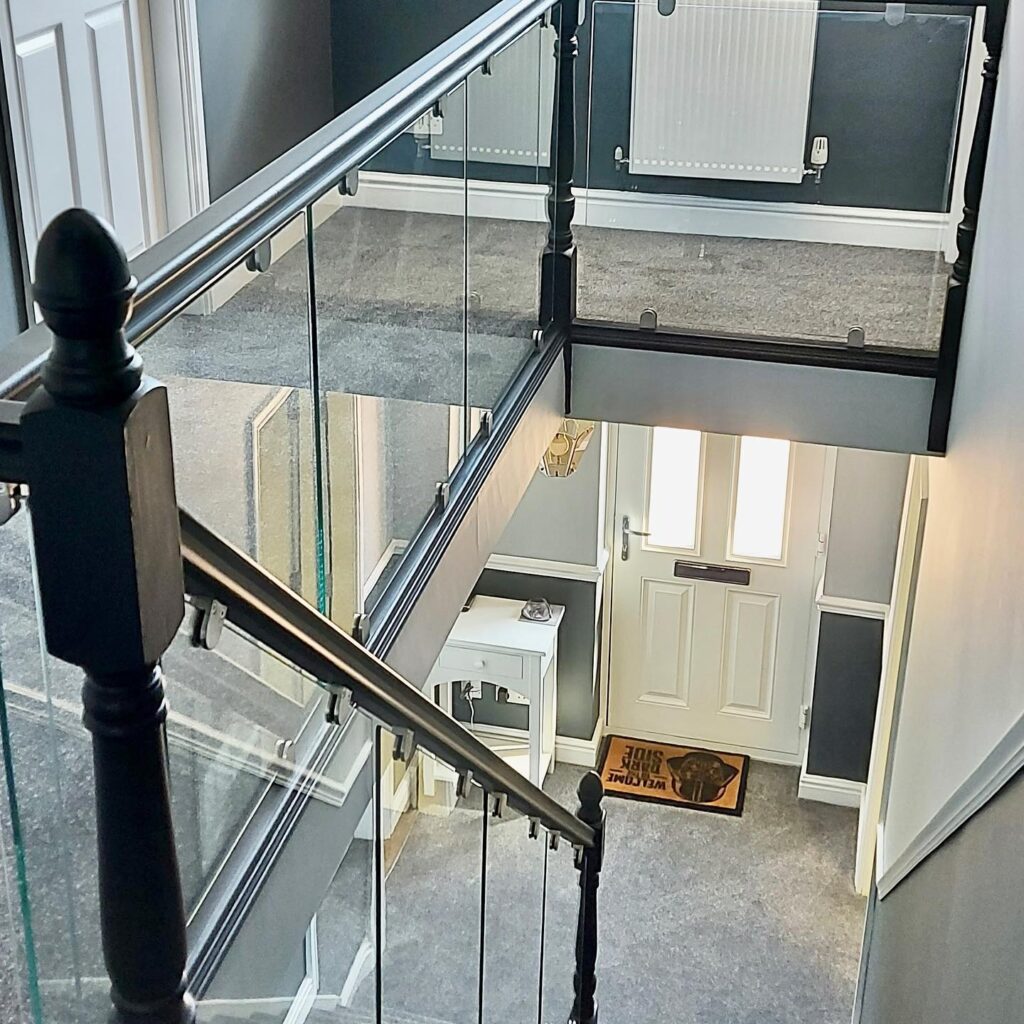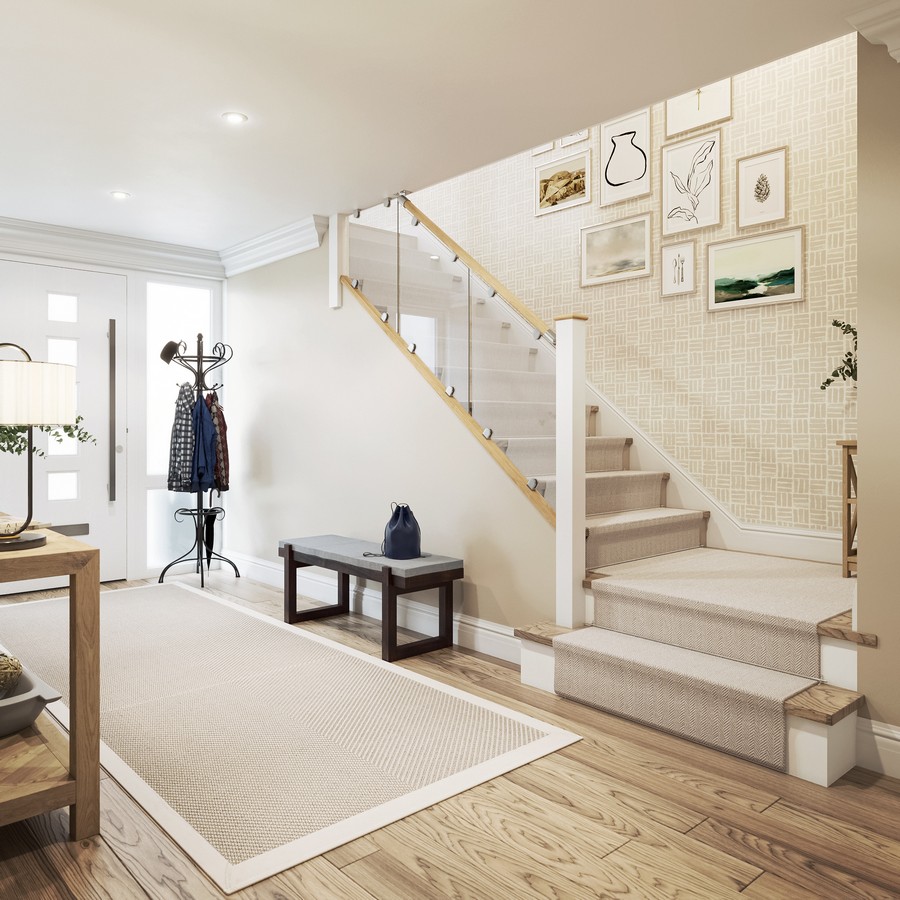


Don’t miss out!
How to paint your staircase
Refresh wooden staircases with our guide on painting staircases. StairFurb offers three pre-painted white staircases, grey staircases and black staircases.
However, if you’re looking for DIY stair painting tips, this guide is for you.
Painting your staircase is a great way to refresh your home, although it can be a very time consuming DIY project. A staircase is the core of a home that gets a lot of attention even from the guests. It’s very important that your staircase looks presentable and adds a stylish touch to your home or living space. Once you’ve finished, you’ll wonder why you didn’t do it sooner.
StairFurb supply pre-painted staircase refurbishment kits or alternatively, primed options that come ready to paint the colour of your choice. Get a free brochure delivered to your home today.
Knowing Where To Start
How to paint a staircase in different scenarios.
If it’s a new staircase being painted, check for any knots in the wood and treat with ‘patent knotting’ before applying the first coat of primer. Then apply two further layers to ensure paint will smooth and spread evenly over knots.
Sand down the surface to remove any loose or flaking paint or varnish, and to provide the optimal surface for any new paint or varnish to be applied.
Apply one undercoat and two topcoats if using paint – you can change gloss to satinwood paint and vice versa once the undercoat has been applied. Apply one coat of varnish, or two if there are any completely bare areas of wood.
Sand down the surface to remove any loose or flaking paint or varnish, and to provide the optimal surface for any new paint or varnish to be applied.
Apply one undercoat and two topcoats if using paint – you can change gloss to satinwood paint and vice versa once the undercoat has been applied. Apply one coat of varnish, or two if there are any completely bare areas of wood.
Depending on the size of your staircase, allow a full day to get the job done. Taking the time and consideration will make sure you avoid wear and tear in the future.
Paint the spindles and newel posts, any exposed timber on the stair itself first.
After first applying paint, give it an hour and check to see if the paint you have runs down the spindles or newel posts. If it does, in a separate pot, mix some grit to the paint to make it more adhesive.
Don’t forget to paint the underside of the handrail.
Paint the handrail and bannister last. You will likely not notice how often you place your hand on it subconsciously. Especially if you’re painting
If you want to replace your staircase or install a new one you can choose from a range of staircase refurbishment kits.
Check out the StairFurb online store, where you can order parts and kits online.

Preparing Your Staircase

If you’re painting your stairs as well as the bannisters, take off any carpet you have. Make sure to peel back just a little bit beforehand to make sure the wood is good to paint.
When painting bannisters, cover up any of the floor or carpet directly underneath.
Once the carpet is off the stairs, remove the padding, tack strips, and all the staples keeping them in place. Then, thoroughly clean the staircase.
Wipe down every part of the staircase being painted with warm, soapy water or all-purpose cleaner and allow 5 minutes to dry.
Lightly sand the staircase using 120 to 180 grit sandpaper. A sanding block or electric sander can decrease the effort required.
If you are removing previous paint from your staircase, you need a heavier duty 80 grit sandpaper first, and then follow with a finer grit.
Sand down any bumps and fill in holes with wood putty or caulk. Sand down any excess from the filled holes and smooth it all down.
Vacuum and wipe away any sanding dust with a Stair Furb cleaning Kit. The StairFurb cleaning kit is ideal to clean all dust.
Wipe down the staircase with a damp cloth (allow to dry completely) or tack cloth to remove any sanding dust before applying primer.
Layer the areas of the stairs being painted with a high-quality primer designed for areas that are use most often, i.e. bannisters, newel posts, handrails or stairs, to make sure the paint will be able to resist any future wear and tear in the future.
Paint on primer from the top of the staircase and work down. Primer is often thin and will run down your bannister and drip.
If varnishing your staircase, apply a primer coat of varnish thinned down with 25% white spirit, followed by two coats of varnish.
Be sure to wait for the primer to fully dry before applying the next coat. This may take up to an hour.
Painting Your Staircase
You will need to make a design if you have a particular look in your mind and if your stair is new. Use tape to achieve this.
Apply painter’s tape along your staircase wall border and spindles. Put the tape as close to the edge of the spindles as possible, protecting the areas you’re most likely to get paint on.
Dab some of the paint onto the stairs to make sure it matches the desired appearance. You can also check whether the paint is too thin.
If the stairs are slippery, and paint is running down or not spreading evenly, add some grit to the paint to give it some texture.
Since stairs get so much abuse, make sure you pick out high-quality paint that can withstand all of the foot traffic.
Starting with the spindles at the top of the staircase, apply the first layer of paint.
Once the surfaces have fully dried, apply an even second coat of paint using the same method as before. Remember to leave to dry for 6–8 hours before applying a second coat.







 GET PHOTO ESTIMATE
GET PHOTO ESTIMATE
 BOOK CALL NOW
BOOK CALL NOW
 START DIY QUOTE
START DIY QUOTE
 BOOK CALL NOW
BOOK CALL NOW
 START DIY QUOTE
START DIY QUOTE